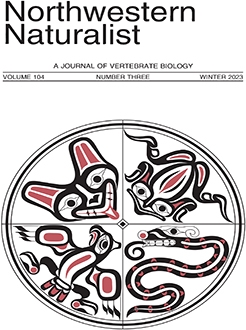Species-specific knowledge of climate needs and associations is crucial to inform amphibian conservation efforts. A recent study conducted 2 survey sessions at 5-y intervals (2013 and 2018) for Western Toad (Anaxyrus boreas) breeding activity at 124 ponds in northern Idaho and northeastern Washington. The 2nd sampling session detected Western Toad breeding activity at 41% (n = 7) of sites where breeding activity was detected during the 1st sampling session (n = 17). During the 2nd survey, breeding activity was detected at just 1 of 107 sites where it had not been detected during the 1st sampling session. Second sampling session detections were disproportionally skewed north in latitude to a portion of the study area that is documented to have a relatively high proportion of cool-air microclimates. We hypothesized that Western Toad breeding activity would be more likely to persist at locations which are relatively cooler than mean climate variables of other study sites and tested this hypothesis by running a logistic regression of climatic variables in the program R. Mean annual minimum temperature at the 4-km scale was the single predictor variable for detection of Western Toad breeding persistence between 2013 and 2018. We recommend future work continue to document demographic trends for Western Toads and managers incorporate Western Toads into climate microrefugia management plans.
How to translate text using browser tools
11 December 2023
MEAN ANNUAL MINIMUM AIR TEMPERATURE PREDICTS WESTERN TOAD (ANAXYRUS BOREAS) BREEDING SITE PERSISTENCE IN NORTHERN IDAHO AND NORTHEASTERN WASHINGTON
Michael K Lucid,
Sam Cushman
ACCESS THE FULL ARTICLE

Northwestern Naturalist
Vol. 104 • No. 3
Winter 2023
Vol. 104 • No. 3
Winter 2023
Anaxyrus boreas
climate change
minimum air temperature
Western Toad




